Different types of cargo ships based on size and capacity
Various types of cargo ships travel the waters in the vast world of maritime transport, each being categorized differently based on size and load capacity.
We provided an overview of the various types that make up the global shipping sector, from small vessels specializing in short-distance operations to massive mega-container ships setting new records for capacity.
Come with us as we sail the seas of cargo ship varieties, examining how each plays a part in the intricate web of global shipping logistics.
Contents
Small cargo vessels are purposefully designed to transport limited goods across short distances. These vessels, often characterized by their modest size and streamlined design, are crucial in connecting ports and facilitating regional trade.

Pros:
1. Efficient Short-Distance Transport: Small cargo vessels excel in maneuverability, making them ideal for navigating through narrow waterways and accessing ports with limited infrastructure.
2. Lower Operational Costs: With reduced fuel consumption and staffing requirements, small cargo ships boast cost-effective operations, contributing to economic and sustainable shipping practices.
3. Flexibility in Port Access: The compact size of these vessels enables them to dock at smaller ports, fostering connectivity in regions where larger ships might face limitations.
4. Quick Turnaround Times: Their simplicity and ease of handling translate to faster loading and unloading processes, minimizing port congestion and optimizing overall efficiency.
5. Adaptability to Varied Cargo: Small cargo vessels are versatile, accommodating a range of goods, from perishables to manufactured goods, making them suitable for diverse regional trade demands.
Cons:
1. Limited Cargo Capacity: While efficient for short distances, the smaller size translates to limited cargo capacity, restricting the volume of goods that can be transported in a single voyage.
2. Weather Sensitivity: Small cargo vessels may be more susceptible to adverse weather conditions, impacting their ability to maintain schedules and pose challenges during rough seas.
3. Competition from Larger Vessels: In highly competitive shipping markets, small cargo vessels compete with larger ships that offer economies of scale and potentially lower shipping costs per unit.
4. Technology and Automation Challenges: Implementing advanced technologies and automation can be more challenging due to space limitations on small cargo vessels, potentially hindering innovation.
5. Environmental Impact: While generally more fuel-efficient than larger counterparts, small cargo vessels may still contribute to environmental concerns, necessitating ongoing efforts for sustainability.
Medium-sized Freighters: Striking a Balance in Maritime Versatility
Medium-sized cargo vessels, the workhorses of maritime trade, embody a harmonious blend of capacity and maneuverability, addressing a spectrum of shipping needs. These vessels fall between smaller, agile carriers and the colossal giants of the sea.
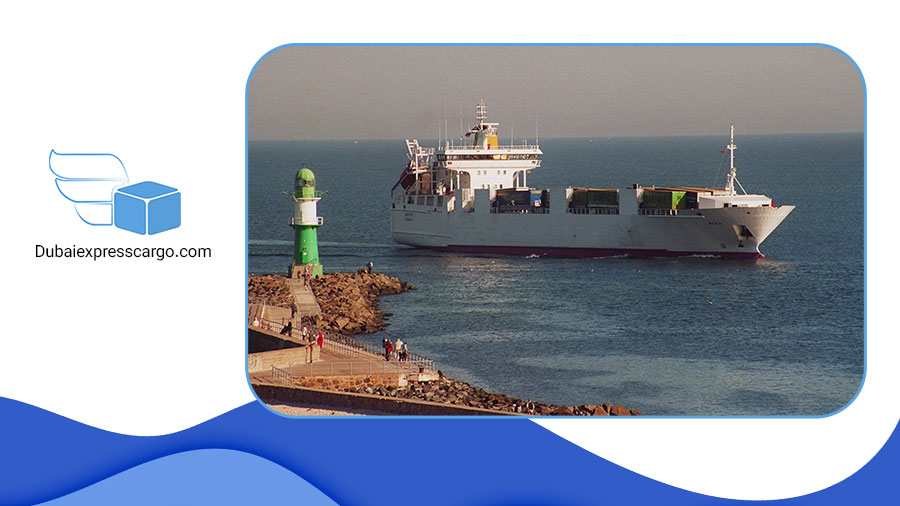
Pros:
1. Versatile Cargo Capacity: Medium-sized freighters strike a balance, offering substantial cargo space without the logistical challenges associated with larger vessels.
2. Enhanced Maneuverability: While not as nimble as smaller ships, medium-sized freighters maintain reasonable maneuverability, effectively navigating various ports and waterways.
3. Cost-Efficient Operations: These vessels optimize operational costs, striking a balance between the efficiency of smaller ships and the economies of scale achieved by larger container carriers.
4. Adaptability to Varied Cargo: The versatility of medium-sized freighters extends to their ability to transport diverse goods, catering to the demands of a dynamic global market.
5. Accessibility to Medium Ports: Medium-sized cargo vessels can access a broader range of ports compared to larger ships, contributing to improved connectivity in regions with intermediate infrastructure.
Cons:
1. Competition with Larger Vessels: Medium-sized freighters may face competition challenges from larger vessels, particularly on high-demand routes where economies of scale become crucial.
2. Environmental Impact: While more efficient than larger ships, medium-sized vessels still contribute to environmental concerns, prompting the industry to focus on sustainable practices.
3. Limited Capacity for Bulk Cargo: In comparison to bulk carriers, medium-sized freighters may have limitations in accommodating extremely large quantities of single-type cargo.
4. Potential Challenges in Stormy Seas: While more stable than smaller vessels, medium-sized freighters may encounter challenges in adverse weather conditions, impacting schedules and safety.
5. Technological Integration Challenges: Implementing advanced technologies, automation, and environmental innovations may be somewhat restricted due to the size constraints of medium-sized cargo vessels.
General Cargo Ships: Adaptable Mariners of Diverse Freight
General cargo ships, versatile workhorses of the seas, showcase adaptability, efficiently transporting many goods with flexible storage configurations to meet varied industry demands.
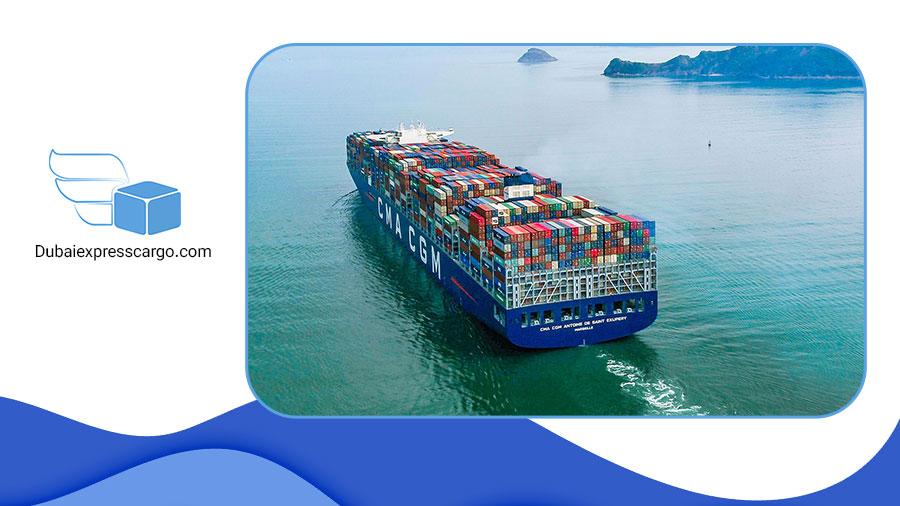
Pros:
1. Versatility in Cargo: General cargo ships handle diverse goods, from machinery to consumer goods, adapting to the dynamic needs of global trade.
2. Flexible Storage Configurations: These vessels feature customizable storage spaces, allowing for efficiently accommodating goods with varying sizes, shapes, and storage requirements.
3. Accessibility to Various Ports: General cargo ships can navigate a broad range of ports, offering enhanced accessibility compared to larger, specialized vessels.
4. Adaptable to Regional Trade: Suited for short and long-haul routes, these ships contribute to regional trade dynamics by accommodating different types of cargo.
5. Efficient Loading and Unloading: While not as standardized as container ships, general cargo vessels boast efficient loading and unloading processes, optimizing turnaround times.
Cons:
1. Cargo Handling Challenges: The versatility of general cargo ships may present challenges in efficiently handling and stowing diverse goods during transit.
2. Competition with Specialized Vessels: In certain industries, competition from specialized vessels may pose a challenge, particularly when specific cargo requirements demand dedicated transportation.
3. Fuel Efficiency Considerations: General cargo ships, while versatile, may face challenges in achieving optimal fuel efficiency, especially compared to more streamlined and specialized vessels.
4. Limited Economies of Scale: The absence of standardized cargo containers limits economies of scale, potentially impacting the overall cost-effectiveness of transportation.
5. Environmental Impact: Although not as pronounced as larger vessels, the environmental impact of general cargo ships remains a consideration in the ongoing pursuit of sustainable maritime practices.
Ro-Ro Vessels: The Seamlessly Mobile Cargo Movers
Roll-on/Roll-off (Ro-Ro) vessels stand out for their ingenious design, ensuring effortless loading and unloading of wheeled cargo, setting them apart in maritime transport.
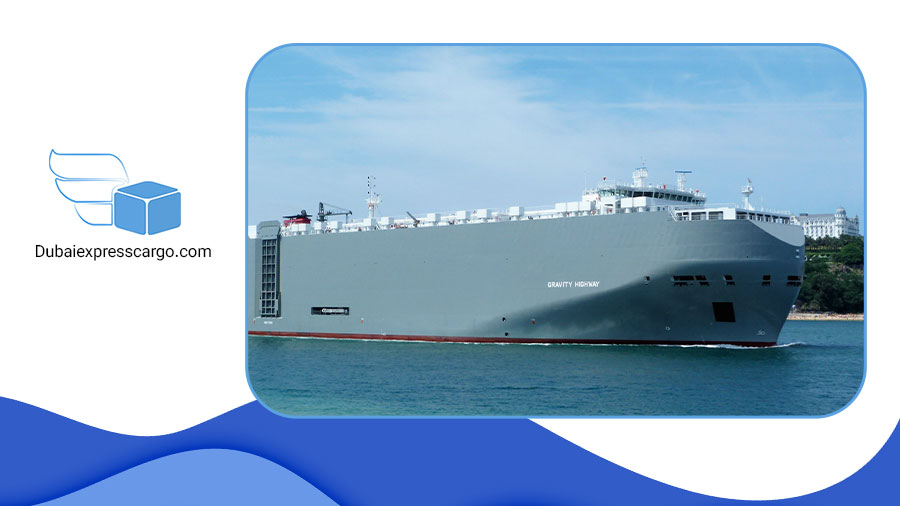
Pros:
1. Efficient Vehicle Transport: Ro-Ro vessels specialize in transporting wheeled cargo, such as cars, trucks, and trailers, streamlining the transportation of vehicles.
2. Time-Saving Loading Process: The unique design allows vehicles to be driven directly onto the vessel, minimizing the time and effort required for loading and unloading.
3. Minimized Cargo Handling Risks: A roll-on/roll-off system reduces cargo damage risk as vehicles can be driven on and off without cranes.
4. Accessibility to Various Ports: Ro-Ro vessels can access a variety of ports, making them adaptable to different trade routes and enhancing their overall accessibility.
5. Streamlined Logistics for Vehicles: These vessels facilitate integrated logistics for the automotive industry, supporting the seamless movement of vehicles between manufacturing hubs and markets.
Cons:
1. Limited Cargo Diversity: While efficient for wheeled cargo, Ro-Ro vessels are unsuitable for transporting general or specialized goods, limiting their application in diverse trade scenarios.
2. Weather Sensitivity: Ro-Ro operations may be affected by adverse weather conditions, posing challenges in maintaining schedules and safety during rough seas.
3. Higher Initial Investment: The specialized design of Ro-Ro vessels may result in higher initial construction costs than more generic cargo ship designs.
4. Potential for Vehicle Damage: While the roll-on/roll-off process reduces handling risks, there is still a possibility of damage to vehicles during transit, particularly in challenging sea conditions.
5. Environmental Impact: Ro-Ro vessels’ fuel consumption and emissions contribute to environmental concerns, necessitating ongoing efforts to improve sustainability in sea freight.
Tankers, the liquid cargo maestros, are critical in transporting liquids, encompassing oil, chemicals, and liquefied natural gas, on the high seas.
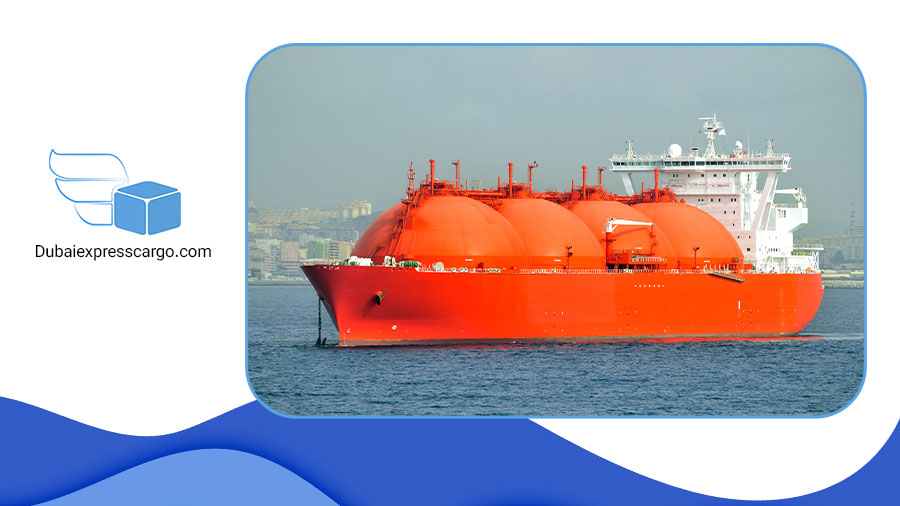
Pros:
1. Specialized Liquid Transport: Tankers are purpose-built for safely transporting vast quantities of liquid cargo, including crude oil, chemicals, and petroleum products.
2. Economies of Scale: The massive size of tankers allows for significant economies of scale, contributing to cost-effectiveness in transporting large volumes of liquids.
3. Strategic for Energy Supply Chains: Tankers form a linchpin in global energy supply chains, facilitating the efficient movement of crude oil and liquefied natural gas from producers to consumers.
4. Reduced Packaging Needs: Transporting liquids in bulk reduces the need for extensive packaging, contributing to cost savings and minimizing environmental impact compared to alternative transport methods.
5. Specialized Safety Measures: Tankers implement advanced safety features to prevent spills and leaks, ensuring the protection of the environment and the safety of crew members.
Cons:
1. Environmental Risks: Accidents or spills from tankers, particularly those carrying oil or hazardous chemicals, pose significant environmental risks, necessitating stringent safety regulations.
2. Limited Cargo Diversity: Tankers specialize in liquid cargo, limiting their application to industries that predominantly deal with bulk liquids rather than diverse goods.
3. Dependency on Global Oil Markets: The tanker industry is heavily influenced by global oil markets, with fluctuations in oil prices impacting demand for tanker services.
4. Navigational Challenges: Tankers’ size and handling present challenges, especially in congested waterways and ports, requiring precise maneuvering and coordination.
5. Carbon Emissions: Tankers contribute to carbon emissions due to their reliance on fossil fuels, prompting the industry to explore cleaner and more sustainable propulsion technologies.
Specialized Cargo Ships: Tailored Solutions for Precious Cargo
Specialized cargo ships cater to unique transport needs, ensuring the safe and efficient carriage of specific goods like livestock or perishables.
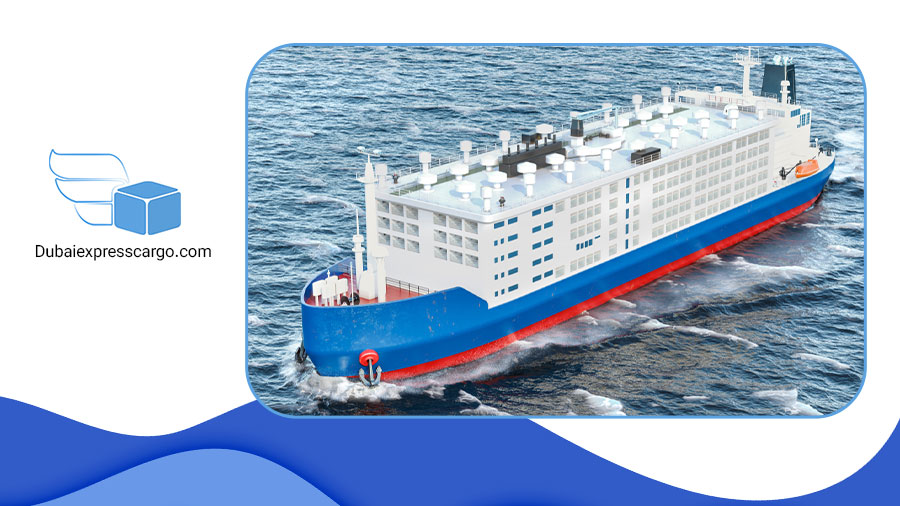
Pros:
1. Customized for Precise Needs: Specialized cargo ships are designed to cater to certain goods’ requirements, ensuring optimal conditions during transport.
2. Enhanced Safety Measures: These vessels incorporate advanced safety features, such as climate control or specialized containment, safeguarding the integrity of the cargo.
3. Reduced Handling Risks: Tailored designs reduce the risks of handling and transporting specialized cargo, minimizing potential damage or loss.
4. Compliance with Regulations: Specialized cargo ships often comply with strict regulations governing the transport of specific goods, ensuring adherence to industry standards and legal requirements.
5. Efficient Transport for Niche Industries: Industries with unique cargo requirements, such as pharmaceuticals or live animals, benefit from the efficiency and reliability of specialized cargo ships.
Cons:
1. Limited Cargo Diversity: Specialized cargo ships are designed for specific goods, limiting their versatility compared to general-purpose vessels transporting various cargo.
2. Higher Initial Costs: The specialized nature of these vessels may lead to higher initial construction and operational costs, impacting overall transportation expenses.
3. Dependency on Market Demand: The demand for specialized cargo transport is often tied to specific industries, making these vessels susceptible to market fluctuations in those sectors.
4. Environmental Concerns: Depending on the cargo, specialized ships may carry environmental considerations, such as the impact of transporting live animals or hazardous materials.
5. Challenges in Return Voyages: Specialized ships may face challenges securing return cargoes, especially if demand for transporting specific goods is lower on certain routes.
Supersized Container Carriers: Sailing the Seas of Record-Breaking Capacity
Supersized container carriers redefine maritime norms, setting records in size and capacity, ushering in a new era in global cargo transport.

Pros:
1. Unprecedented Cargo Capacity: These mega-container ships boast unrivaled cargo capacities, optimizing efficiency and reducing transportation costs per container.
2. Economies of Scale: Supersized carriers capitalize on economies of scale, contributing to cost-effectiveness and making global trade more accessible and affordable.
3. Global Connectivity: With the ability to carry vast quantities of goods, these vessels enhance global connectivity, linking major ports and facilitating seamless international trade.
4. Reduced Environmental Impact: Per container, mega-container ships are more fuel-efficient, reducing the carbon footprint of transporting goods across long distances.
5. Strategic for Large Ports: Supersized container carriers are designed to serve large, strategic ports equipped to handle their immense size, supporting the growth of major maritime hubs.
Cons:
1. Port Infrastructure Demands: The operation of mega-container ships requires extensive infrastructure, limiting accessibility to ports capable of handling their size and cargo volumes.
2. Limited Flexibility: Supersized carriers are optimized for specific routes and major ports, limiting their flexibility compared to smaller, more versatile vessels.
3. Higher Initial Costs: mega-container ships’ construction and maintenance costs are significantly higher, impacting the initial investment required for these massive vessels.
4. Environmental Concerns: While per-container efficiency is higher, the overall environmental impact of mega-container ships, including emissions and potential oil spills, remains a concern.
5. Dependency on Global Trade Trends: The demand for mega-container ships is closely tied to global trade trends, and trade volume fluctuations can impact these vessels’ profitability.
Container/Ro-Ro (ConRo) Ships: Bridging the Gap for Versatile Cargo Transport
Container/Ro-Ro (ConRo) ships seamlessly blend the features of container and Ro-Ro vessels, offering a hybrid solution that enhances cargo flexibility in maritime transport.
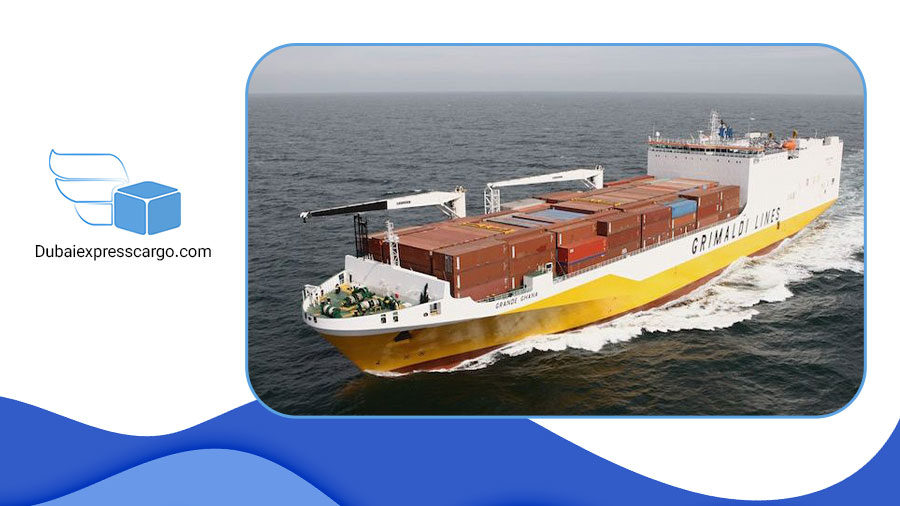
Pros:
1. Versatile Cargo Handling: ConRo ships provide the flexibility to transport both containerized and non-containerized cargo, accommodating a diverse range of goods.
2. Efficient Loading and Unloading: The combination of container and Ro-Ro features allows for swift loading and unloading processes, optimizing overall operational efficiency.
3. Adaptability to Varied Ports: ConRo ships can access a wide range of ports, combining the flexibility of container ships with the accessibility of Ro-Ro vessels.
4. Enhanced Route Flexibility: These hybrid vessels are well-suited for routes that require adaptability to different types of cargo, making them versatile in various trade scenarios.
5. Streamlined Logistics: ConRo ships streamline logistics by catering to industries requiring containerized and wheeled cargo transport, offering an integrated solution.
Cons:
1. Construction and Maintenance Costs: The hybrid nature of ConRo ships may lead to higher construction and maintenance costs compared to more specialized vessel types.
2. Limitations in Bulk Cargo: While versatile, ConRo ships may have limitations in transporting extremely large quantities of bulk cargo compared to specialized bulk carriers.
3. Technical Complexity: Combining container and Ro-Ro features introduces technical complexities, requiring advanced technologies and operational expertise for seamless functionality.
4. Environmental Impact: ConRo ships, like many vessels, contribute to environmental concerns, prompting the need for sustainability initiatives in the maritime industry.
5. Competition with Specialized Vessels: In specific industries, ConRo ships may face competition from more specialized vessels offering optimized solutions for certain types of cargo.
Future Trends in Cargo Shipping
As we peer into the future, emerging technologies and trends promise to revolutionize cargo ships, prioritizing efficiency and sustainability.
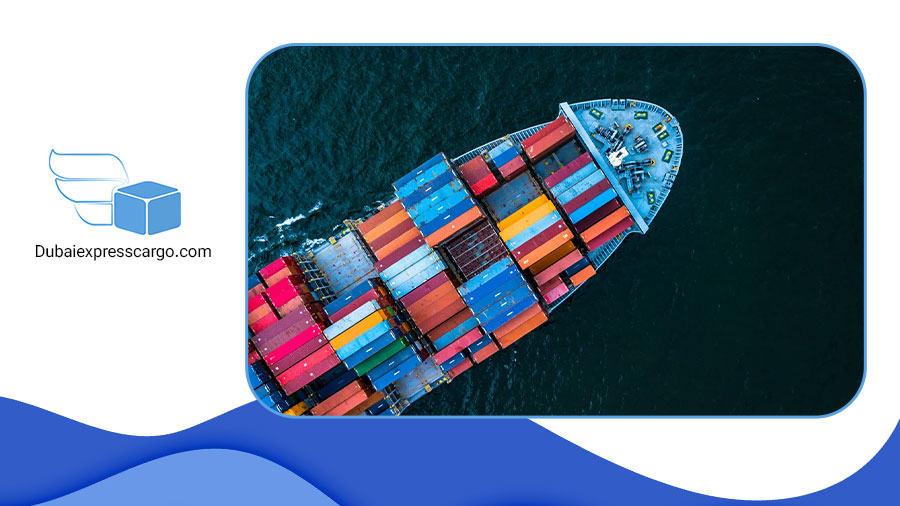
1. Green Propulsion Technologies: Future cargo ships should adopt eco-friendly propulsion methods like LNG, hydrogen, or electric propulsion systems.
2. Autonomous Shipping: Integrating autonomous navigation systems will enhance operational efficiency, reduce labor costs, and improve overall safety in cargo shipping.
3. Smart Containerization: IoT-enabled smart containers will provide real-time cargo tracking, optimize logistics, reduce errors, and ensure timely deliveries.
4. Advanced Robotics: Robotics and automation will play a pivotal role in cargo handling, leading to faster loading/unloading processes and minimizing human intervention.
5. Data Analytics for Predictive Maintenance: Utilizing data analytics for predictive maintenance will reduce downtime, enhance ship reliability, and contribute to efficient fleet management.
6. Solar and Wind Power Integration: Cargo ships of the future may integrate solar panels and wind turbines to harness renewable energy, reducing reliance on traditional fuel sources.
7. Materials Innovation: Lightweight and durable materials, such as advanced composites, will be used in ship construction, contributing to fuel efficiency and sustainability.
8. Hybrid and Multi-Fuel Systems: Hybrid propulsion systems and multi-fuel engines will offer versatility, allowing ships to switch between different fuel sources for optimal efficiency.
9. Blockchain for Transparent Supply Chains: Implementing blockchain technology will ensure transparent and secure supply chains, reducing fraud and improving accountability in the cargo shipping industry.
10. Green Ports and Shore Power: Future cargo ships may connect to shore power at green ports, reducing emissions during idle times and contributing to sustainable port operations.
In conclusion, the future of cargo shipping is marked by a synergy of advanced technologies and sustainable practices. As the industry continues to evolve, these trends promise to reshape the maritime logistics landscape, optimize efficiency, and champion environmental responsibility in the global transport of goods.

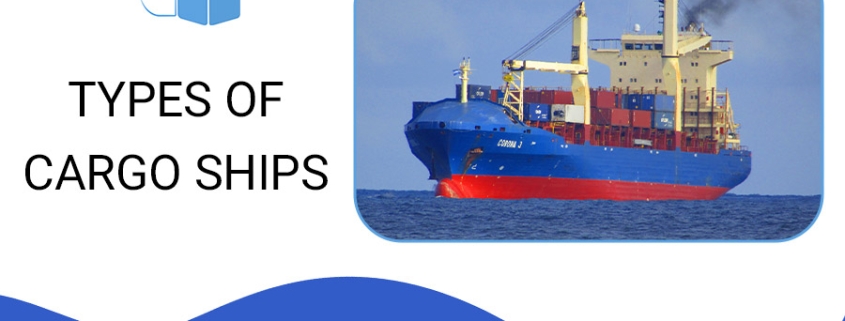


Leave a Reply
Want to join the discussion?Feel free to contribute!